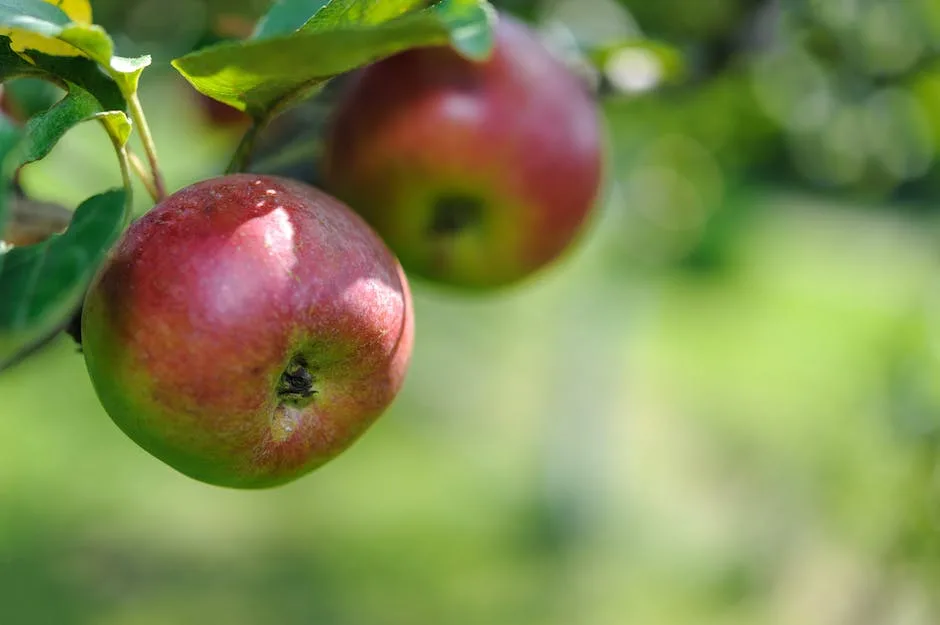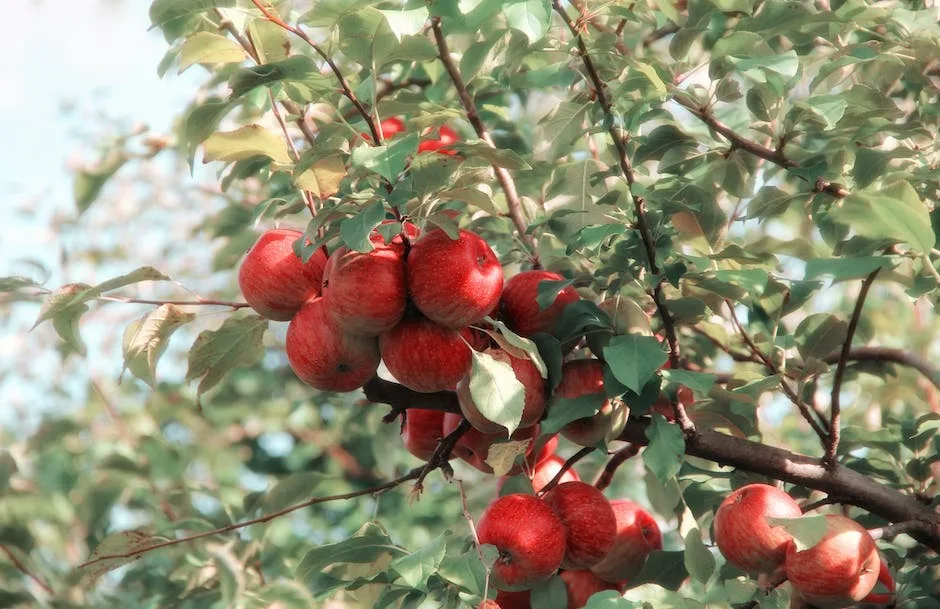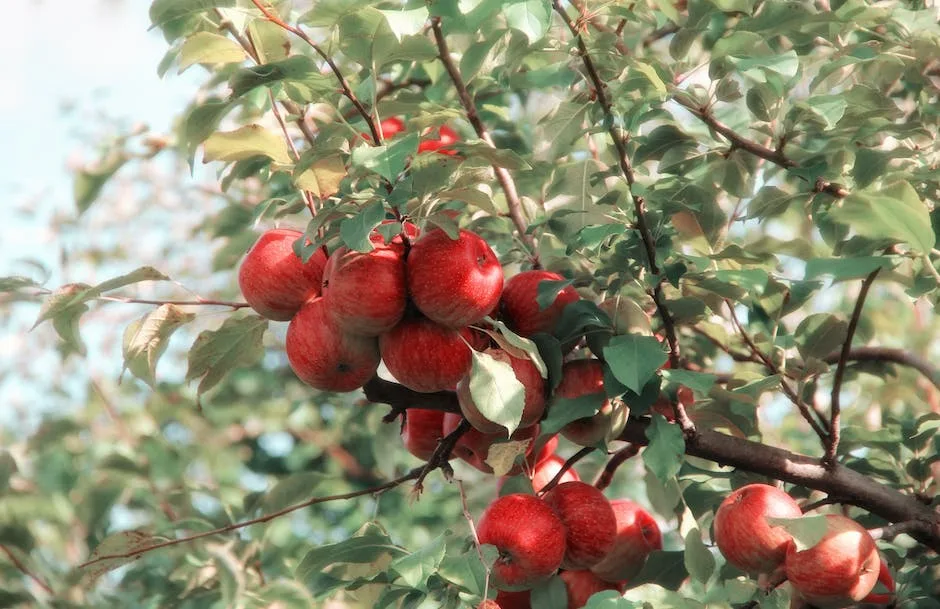Yes, a single apple tree can produce fruit. In fact, most apple trees are planted as single trees. However, it is possible for apple trees to be planted in groups of two or more.
Yes, a single apple tree can produce fruit.
What happens if you only have one apple tree?
One tree is not enough to set fruit. The vast majority of apple trees require a different variety grown nearby for pollination. While some apple varieties are self-pollinating, even they produce more fruit with another variety nearby.
While some varieties of apple are able to fertilize themselves (trees described as ‘self-fertile’), others require pollen from another tree to do the job – a process known as cross-pollination. This process is important to ensure that the apple crop is successful, as it ensures that the trees are able to produce fruit.
Can you have just one fruit tree
Self-pollination is when a plant transfers pollen from the male organ or stamen to the female organ or pistil of the same flower (or of another flower on the same plant). This usually happens when the anther (the male organ) and the stigma (the female organ) are in close proximity to each other. Many fruit trees do not require cross pollination by a different variety in order to bear fruit; they are self-fruitful. This means that they will produce fruit when one variety is planted alone. Most peach and tart cherry varieties are self-fertile and can be expected to bear fruit with pollen from the same tree or another tree of the same variety.
Apple trees need at least 8 hours of sun per day during the growing season. Two varieties are required for successful pollination; one can be a crabapple.
How can you tell if an apple tree is male or female?
The flowers on the end of the plant are called pistils. The ones with the flowers are female and the ones without are male.
Cross-pollination is when pollen is transferred from the male organ or stamen of one flower to the female organ or pistil of another. This usually happens when insects, like bees, move from one flower to another. All apple trees need at least some cross-pollination in order to set fruit. Even though some varieties are listed as being self-fruitful, they will usually set fruit more heavily and more regularly if they are cross-pollinated.
Can apple trees produce fruit without pollination?
In order for apple and pear trees to produce fruit, they must be cross-pollinated. This means that you must plant two different varieties of each tree if you want to harvest any fruit. Some varieties of apple and pear trees produce sterile pollen and will need to be planted with at least two other varieties in order to bear fruit.
While self-fertile apple trees will produce fruit without a pollinator, every tree benefits from having a pollinator partner. Pollination will only occur when pollen is transferred from one tree to another. By having a pollinator partner, trees are more likely to produce higher quality fruit.
Can a single tree pollinate itself
Bees are important for pollinating trees, but some trees can pollinate and bear fruit all by themselves. This is called self-pollinating or self-fruitful. Self-pollinating fruit trees include common varieties of apricot, peach, nectarine and sour cherry, which means these trees won’t need pollination from bees.
Self-pollinating fruit trees are great for small gardens or if you don’t want to rely on the weather for pollination. However, if you want a bigger harvest, you’ll need to grow trees that require pollinators. This is because the pollinators will help to spread the pollen around and improve the chances of fertilisation.
Why my apple tree has no apples?
Although it can be frustrating to wait for your apple tree to bear fruit, it is important to remember that the tree needs time to mature before it can produce fruit. The lack of flowers is often due to the age of the tree; after planting, most dwarf and semi-dwarf apple trees don’t flower and bear fruit for 3 to 5 years. The lack of fruit is likely due to the absence of flowers, poor pollination, or low temperatures during bloom. If you continue to care for your tree, it will eventually produce fruit.
Self-fertile apple varieties include Golden Delicious, Braeburn, Granny Smith, and Scrumptious. The Home Orchard Society has a more thorough breakdown of self-fruitful varieties. Even self-fertile apple varieties will bear more fruit if cross-pollinated.
How long does it take an apple tree to bear fruit
There are several reasons to choose a dwarf or semi-dwarf apple tree over a standard tree. dwarf and semi-dwarf trees take up less space, so they are a good choice for small yards or areas with limited space. They also produce fruit more quickly than standard trees. Dwarf and semi-dwarf apple trees are easier to care for and prune than standard trees.
Cox Self Fertile apples are very similar to classic Cox’s (Cox’s Orange Pippin), but this newer variety has several advantages. As the name implies, Cox Self Fertile apple trees are self fertile and don’t require an additional tree for pollination. This makes them much easier to grow, and is especially helpful if you have a smaller garden. They also tend to be more disease resistant than other apple varieties, making them a good choice for organic growers. Finally, Cox Self Fertile apples tend to be more consistent in size and shape than other varieties, making them ideal for commercial growers.
Do Honeycrisp apple trees self-pollinate?
An apple tree cannot self-pollinate, so the pollen from other apple varieties is necessary for fruit to grow. Orchard owners often plant crab apple trees amongst high-value apples such as Honeycrisp, Gala and Fuji. This allows the bees to transfer pollen between the different varieties of apple trees, resulting in a better yield of fruit.
Apple trees are typically self-unfruitful, which means that they require cross-pollination from another variety of apple tree in order to produce a crop. Planting at least two different apple tree varieties within 50 feet of one another will ensure a good fruit set. Some apple varieties, such as Golden Delicious, will produce a crop without cross-pollination from a second variety.
Do apple trees prefer sun or shade
The ideal position for an apple tree is a sunny, sheltered site, well away from any frost pockets. Avoid poorly-drained or shallow soils.
The Black Diamond apple is one of the rarest apples in the world. They are only grown in remote places and are extremely difficult to find. Few people have ever had the chance to taste one of these apples.
Can you just plant an apple
Apple trees can be grown from apple seeds, but most of the time, they will not produce the same type of apple tree as the parent tree. For example, a seed taken from a Red Delicious apple tree will not produce a Red Delicious apple tree. Seedling apple trees are genetically different and usually inferior to the parent tree.
Now is the time to plant apple trees if you want to enjoy the fruit in the future. The best time to plant them is in spring, although the exact month will depend on your location. March and April are ideal for most growers, but if you live in a warmer climate (USDA zones seven and warmer), you can start planting in the fall.
Final Words
Different apple trees can produce different amounts of fruit. For example, a dwarf apple tree may produce 20-30 pounds of fruit each year, while a full-sized tree can produce up to 500 pounds.
The answer is yes, a single apple tree can produce fruit. Although it takes a little time and care to get the tree to yield fruit, it is certainly possible. With the right amount of sunlight, water, and nutrients, an apple tree will produce a bountiful crop of apples that can be enjoyed fresh off the tree or made into pies, jams, and other delicious treats.
Jackson Hill is a passionate arborist with years of experience in the field of trees. He developed his fascination with trees at a young age, spending countless hours exploring the forests and climbing trees. Jackson went on to study arboriculture and horticulture at Michigan State University and later earned a degree in forestry from the University of Michigan.
With his extensive knowledge and expertise, Jackson has become a trusted authority on trees and their impact on the environment. His work has helped shape the field of arboriculture and he continues to be a leading voice in the industry.
